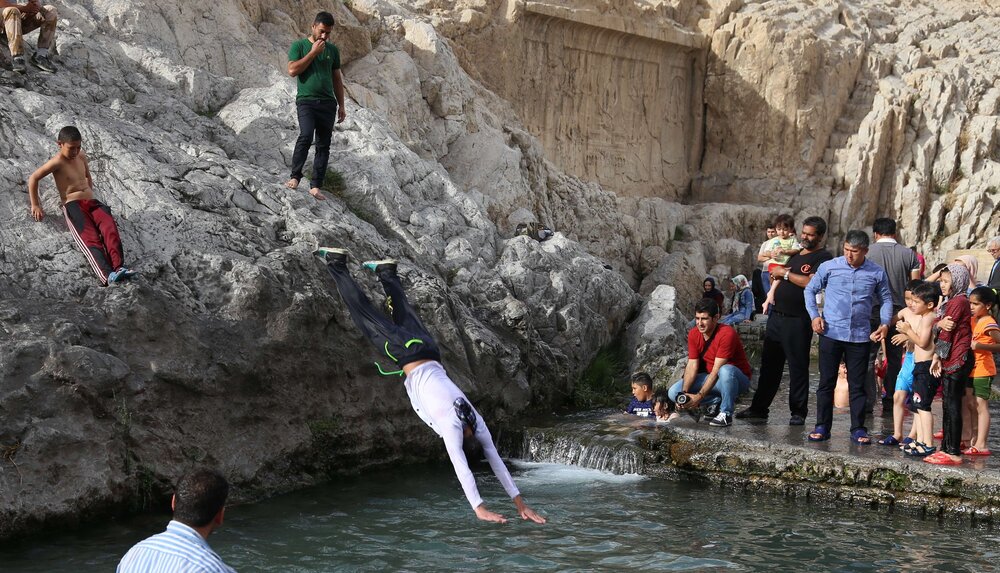Cheshmeh-Ali spring awaiting national heritage status

TEHRAN – Cheshmeh-Ali historical spring in the city of Rey, southern Tehran, is planned to be inscribed on the national heritage list, a provincial tourism official has said.
The national registration of the thousands-year-old spring will lead to its better preservation as well as help tourism develop in the region, Rey’s cultural heritage department director Amir Mosayeb Rahimzadeh said on Sunday, CHTN reported.
Cheshmeh-Ali, literally meaning “Spring of Ali”, is a historical and recreational spot in Rey. It is also home to 19th-century rock-carved bas-relief, which was commissioned by the Qajar king Fath Ali Shah (r. 1797 – 1834).
In the summertime, the site is occupied by tens of locals who come for a swim to escape the harsh surrounding environment.
In the past, people used to clean their rugs and carpets in the pool that is fed by an underground mineral spring, with the idea in mind that its water better cleans their carpets making the colors more vivid.
Cheshmeh-Ali is in the neighborhood of the ancient Ebn-e Babveyh cemetery, the 12th-century Tughrul Tower, the historical Rashkan Castle, and next to the aged Rey Castle.
Rey was one of the capital cities of the Parthian empire (3rd century BC–3rd century CE) and it was captured by the Muslim Arabs in 641 CE. During the reign of the Muslim caliph al-Mahdi in the 8th century, the city grew in importance until it was rivaled in western Asia only by Damascus and Baghdad.
According to Encyclopedia Britannica, Islamic writers described it as a city of extraordinary beauty, built largely of fired brick and brilliantly ornamented with blue faience (glazed earthenware).
It continued to be an important city and was briefly a capital under the rule of the Seljuqs, but in the 12th century it was weakened by the fierce quarrels of rival religious sects. In 1220 the city was almost destroyed by the Mongols, and its inhabitants were massacred. Most of the survivors of the massacre moved to nearby Tehran, and the deserted remnants of Rey soon fell into complete ruin.
ABU/MG
Leave a Comment